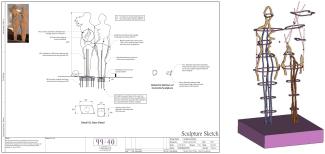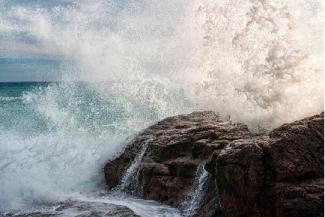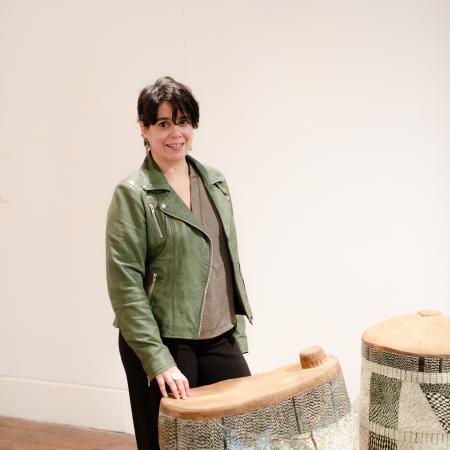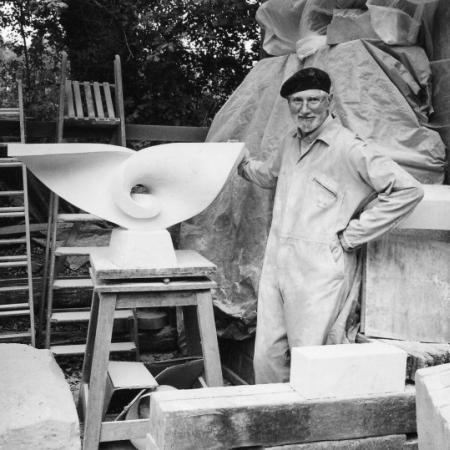In the case study presented here, 99:40 were approached by artist Amanda Cotton and Studio 43 to carry out the structural engineering design. They were asked to make sure the sculpture could withstand the corrosive elements of the sea, and resist the considerable force of coastal storms. Read more about the case study below.
99:40 are Civil and Structural Engineers who work internationally advising artists and sculptors and members of the Royal Society of Sculptors' Suppliers' Circle.
99:40 advise on material selection and carry out structural analysis and design of artwork and want to make sure every artist, sculptor and craftsman has the engineering support they need to progress their ideas and make it a reality. They offer pro-bono work for many works depending on the project's merits. For more information and to contact them go to 9940.co.uk
Context
The fiery story of Anne Bonny and Mary Read was one that had laid buried for centuries. The two pirates were famed for leaving a trail of looted treasure and treacherous ex-lovers behind them. The women's fierce alliance swelled across the high seas, a tempest of courage, adventure and rebellion.
Amanda Cotton's sculpture 'Inexorable' depicts the defiant duo, and is inspired by the legend of these two infamous 18th Century pirates and smugglers. The sculpture would be placed on Burgh Island off the coast of Cornwall, a place that is interwoven with the history of piracy, and the battle against it.

Amanda Cotton worked with Thom Bridle of Studio 43, a company that builds complex large scale 3D art works, to develop the design and construct it
Studio 43 then approached 99:40 to carry out the structural engineering design and make sure the sculpture could withstand the corrosive elements of the sea, and resist the considerable force of coastal storms. The sculpture would be made of concrete, so designing it as reinforced concrete, with embedded steel bars, would be within the normal scope of structural engineering.

The difficulty would be casting the sculpture into the exposed rock at Burgh Island. Firstly, it would be a difficult construction task in the middle of winter, exposed to sea spray and the weather, for both the workers and the setting and curing materials. Secondly, it would be difficult to find a resin that can secure the sculpture's reinforcement down into the island's rock, and also design for the uncertainties in the rock. The rock could be fissured, breakable or just very weak.
There are no resins that are designed for natural rock and we had no idea how strong the rock was, or if it has any hidden faults. We spoke to resin specialists and had a plan on how to do it with confidence, controlling and allowing for the uncertainties, but before we could develop the plan the sculpture was rejected for planning permission.
We contributed a concept design to support the planning application. This wasn't wholly necessary, but it would show to the Council that the sculpture could be built and that this was a serious consideration. Unfortunately the sculpture was ultimately rejected due to a negative public reaction to piracy.

Despite the planning permission rejection the artist was able to find an alternative location for the sculpture and 99:40 went ahead and completed the design for the sculpture. They had to make sure the sculpture would be durable and long lasting, structurally stable and buildable.
Using steel bars bent to the shape of the sculpture and cast into the concrete would have been difficult because of the sculpture's complex shape. Another way to reinforce the concrete had to be found and Thom came up with the idea of cutting steel plates the shapes the reinforcement needs to be to fit the sculpture. With Studio 43's facilities, laser cutting complex shapes was simple - something that would be inconceivable in normal construction practice became the obvious choice.
It was also essential to ensure that nothing cast into the concrete, of which there was many metals and minerals that the artist wanted to cast into each figure, would unduly react with the concrete or reinforcement, or each other.
The sculpture would also need to be movable now, because the artist wanted to move it around the country, so it would need to be built with a concrete base. The concrete base would need to spread the load of the sculpture out to not be too heavy for the ground. It would also need to be broad enough to stop the sculpture toppling over.



